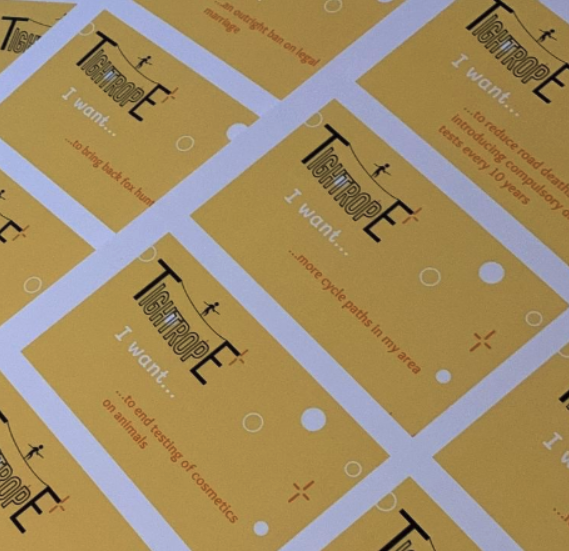Lessons
If I was handed this as a supply teacher with 15mins to prepare to run the session, I would have no doubt that I could do it based on the guidance given. It’s appropriate for teachers who want it spelled out for them step by step but also indicates areas for teachers with flair, or who know their groups well, to be able to expand or challenge further.
6th Form Teacher
We provide teachers with six lesson plans that are designed to help students learn how to create social change in a safe and responsible way. The lessons cover a range of topics, from identifying social issues to developing strategies for creating change. Each lesson is structured to be flexible, allowing teachers to tailor the content to their students’ needs and interests.
General Resources
Change cards

We created “change cards” to help teachers engage students in discussions and activities related to creating positive change. Some students may be too afraid or shy to express their ideas about social change, so the change cards randomly assign a social issue to each student during classroom activities. This helps students express their ideas and opinions about social issues in a safe and supportive environment. The change cards serve several purposes, such as helping students focus their ideas and develop a plan of action for addressing a specific social issue. Teachers can also use the cards to identify which social issues are important to their students and tailor their lessons and activities accordingly.
The change cards can be found here.
The Teacher Guide
Our 60 page guide for teachers gives full information on the background of the course, along with detailed guides to each session, including example scripts.
The guide for teachers can be found here, and we also provide a docx formatted version here.
Sessions were easy to understand, informative and interesting.
Lower 6th pupil
Lessons
The six lesson plans are as follows:
- Introduction - a discussion and exercise on the topic of security in the broad sense - including motivations and capabilities of attackers. The second half of the session is on recasting the social change into more immediate and personal goals like “Start a fencing club”, “advocate against animal testing”. The key message of the session is “You secure things by making things hard to use and sometimes that is bad”.
- Information - this session gives a four step framework for making changes and starts by asking the students to consider the difference between complaining and actually taking action to achieve change. The session focuses on ‘information’ and includes an introduction to Freedom of Information requests.
- Privacy and Threat Modelling - This session examines a group of different activists and invites the students to understand why some conceal their identity and some don’t. It examines a case study of a very traumatic harassment campaign against an activist for trans-rights and discusses the production of risk assessments.
- Cryptography - This session introduces Cryptography and discusses how it is used to secure communications in general.
- Complex Systems - This session leads the students through a set of increasingly complex security systems - starting with the workplace, moving through friendships and relationships and ending with the family. For each example we discuss the challenges inherent to each context and how to manage them.
- Scams, Magic, and Future Directions - This session has three roles. It’s a general overview of some common scam structures. It’s also a chance to catch up on the progress of any projects started during the course, and finally it’s something of a reveal - showing how the majority of the content of the course is from a Cyber Security background and what students can do to find out more.
It has changed my perception of cybersecurity greatly and interested me on the subject greatly as well
Lower 6th pupil
What we ask for
We worked hard on these resources, and the only thing we ask is that you come back to us and let us know how your sessions went, and especially if your students created useful, safe, and long-lasting change in their communities.
